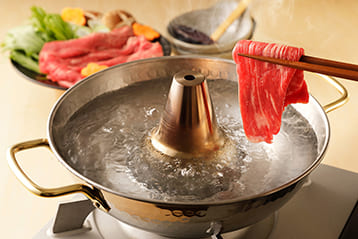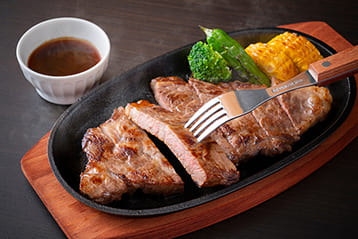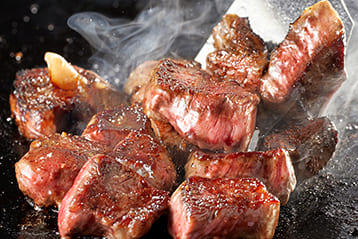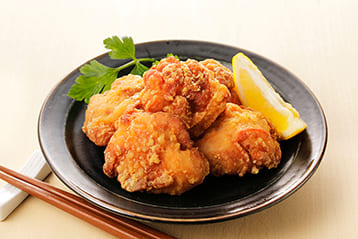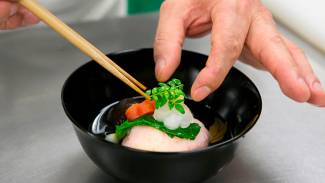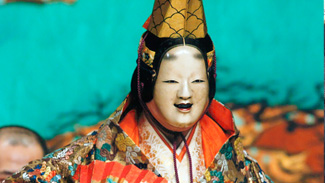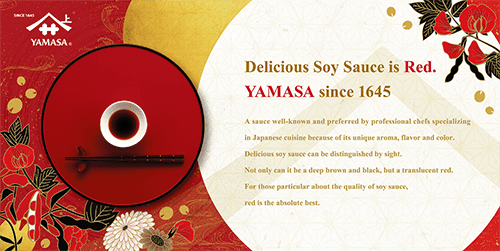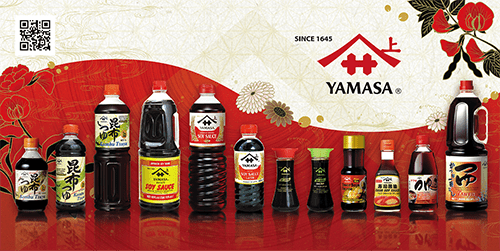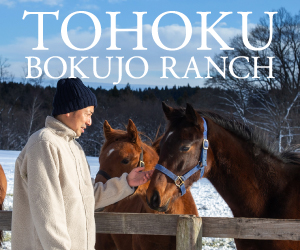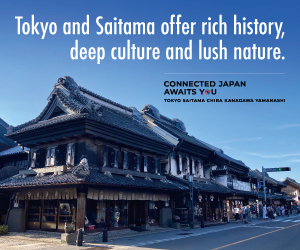JAPANESE CUISINE
Sponsored content
FLAVOR BOOST: A MARRIAGE OF MEAT AND SHOYU
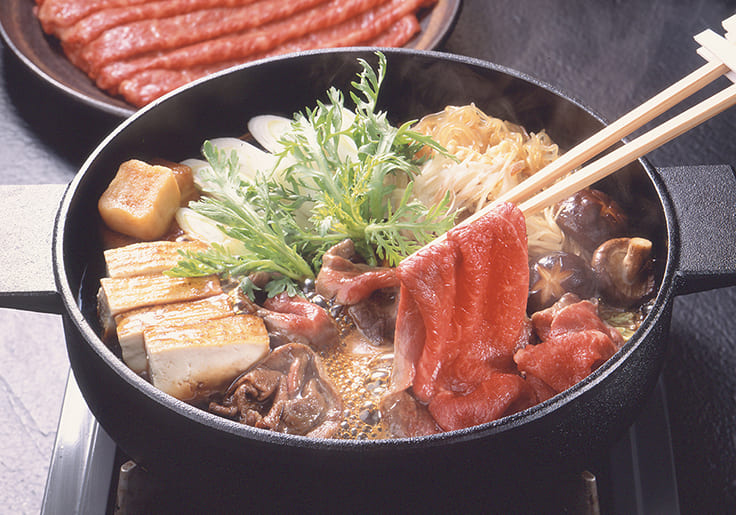
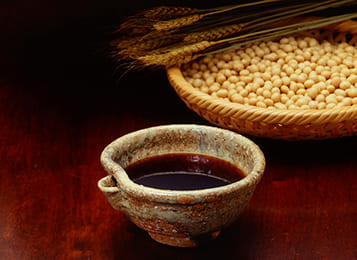
Shoyu is essential to Japanese cuisine; its integral role often makes it impossible to talk about Japanese fare without mentioning the condiment.
Made from soybeans, wheat and salt, shoyu is a sophisticated seasoning thanks to its complicated fermenting process.
Soy sauce is used in a wide range of dishes; not only as an accompanying sauce in typical Japanese seafood-based fare such as sushi and tempura, but also in sukiyaki, shabu-shabu (hot pot), yakitori (chicken grilled on skewers) and other meat-centric dishes. The use in various dishes makes shoyu a versatile condiment in Japanese cooking.
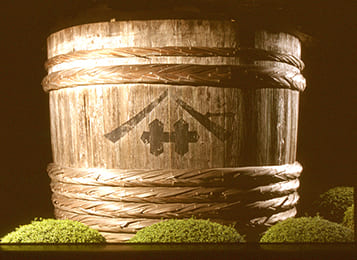
Prior to the Japanese cuisine boom in the U.S. that was triggered by a widespread trend toward health-conscious eating, a modified version of teriyaki — invented to introduce the use of shoyu — is said to have ignited the popularity of the Japanese condiment.
Cooking shoyu at a high temperature produces a very savory aroma. The introduction of shoyu transformed conventional, lightly seasoned chicken dishes in the U.S. into rich and flavorful teriyaki recipes that captivated Americans.
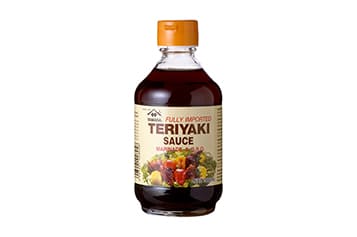
Amino acids are a significant reason behind shoyu’s aroma and flavor. Scientifically speaking, fat produces a flavor component following thermal decomposition and the chemical reaction with the abundant amino acids found in soy sauce results in the enticing fragrance. In simpler terms, using shoyu when cooking meat with a high fat content creates a unique and tantalizing aroma.
Sukiyaki is arguably the most famed Japanese dish that fully captures this appetizing scent, but there are many more Japanese meat dishes to please the palate.
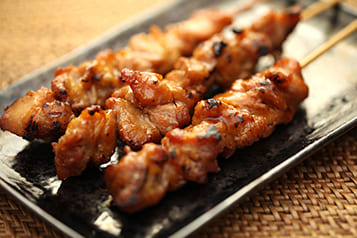
For instance, yakitori and yakiton (grilled, skewered pork) — often accompanied by beer or other alcoholic drinks — are popular options across the board and are typically enjoyed with tare sauce made of shoyu, sugar and mirin (rice wine). Another classic option is steak served with a sauce comprising soy sauce and wasabi.
Japan-bound travelers have an even greater abundance of dishes awaiting them, allowing for a deeper dive into the many stellar combinations of shoyu and meat.
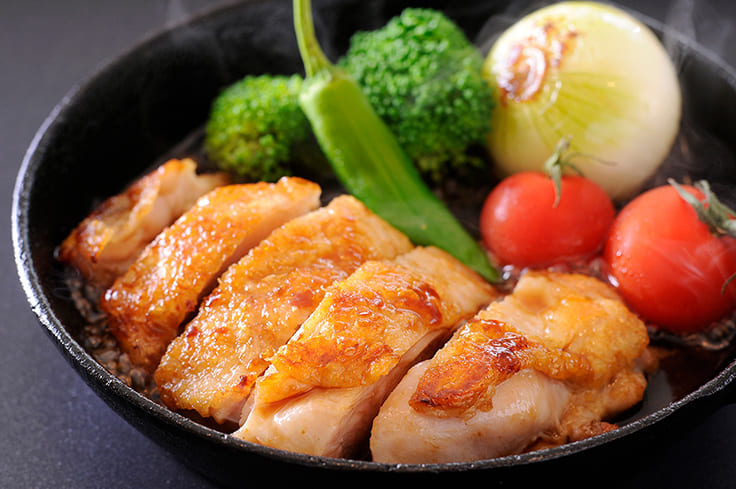
This content is supported by Gurunavi Inc.
TOP-TIER MEATS AND GOOD EATS FOR ALL
There are many dishes and cooking methods to fully enjoy beef, chicken, pork and other meats in Japan. Each restaurant has its own unique style and offerings that allow diners to thoroughly appreciate a range of recipes that draw the best out of local and domestic ingredients.
Here, we introduce some of Tokyo’s finest restaurants decadent enough to fulfill every meat lover’s wildest dreams. Visitors unfamiliar with Japanese cuisine can rest easy — we’ve compiled a list of dishes and definitions to get you started.
All prices do not include tax unless otherwise mentioned. Travelers are recommended to check prices, current menu items and hours before their visit.
List of meat dishes
Sukiyaki: Thinly sliced beef simmered in a sauce along with vegetables and tofu in a shallow iron pot
Shabu-shabu: Diners swish thinly sliced meat back and forth in boiling water or broth several times before enjoying it with dipping sauce.
Steak: Premium wagyu is a high-end option that is often served with soy sauce dips mixed with garlic, onion or wasabi, among other variations.
Yakitori: Chicken skewers accompanied by tare sauce or salt. There are many types that typically use different parts of the chicken.
Teppanyaki: Meat, seafood and vegetables are cooked on an iron grill, sometimes in front of guests.
Karaage: Seasoned chicken generally coated with flour and potato starch before being deep-fried. It is often served in smaller pieces; the similar tatsutaage is typically coated solely in potato starch.
Nabe: Various types of hot pot dishes of simmered meat and vegetables in addition to other ingredients
Ningyocho Imahan
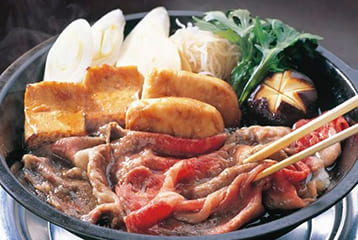
Directions: Three minutes from Ningyocho Station
Hours: 11 a.m. to 3 p.m., 5 to 10 p.m. (weekdays); 11 a.m. to 10 p.m. (weekends and holidays)
Tel: 03-3666-7006
URL: https://gurunavi.com/en/g073900/rst/
Founded in 1895, this Japanese restaurant’s mission is to provide the “best beef” to its customers.
At its traditional restaurant with sukiya-zukuri architecture in the Nihonbashi Ningyocho district, guests can appreciate Imahan’s refined cuisine incorporating high-quality kuroge (black hair) wagyu beef and seasonal ingredients.
Sukiyaki is Imahan’s signature dish and features kuroge wagyu that is prized for its marbling, fat content and melt-in-your-mouth butteriness that continues to beckon meat lovers the world over. The dish is available from ¥4,500 at lunchtime and from ¥7,500 at night.
Hikawa
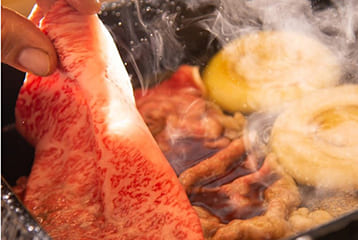
Directions: Four minutes from Akasaka Station
Hours: 11:30 a.m. to 1:30 p.m., 5:30 to 10 p.m. (weekdays); 5:30 to 9 p.m. (Sat.)
Tel: 03-3586-3008
URL: https://gurunavi.com/en/g192500/rst/
Of the delectable options at this high-end restaurant in the Akasaka district, guests should not miss out on trying top-ranked A-5 wagyu. At Hikawa, kuroge wagyu is prepared in various ways, from grilling to steaming, and is served in both individual dishes and courses.
Diners can feast on an array of quality offerings. They should try special Hikawa-fū (style) sukiyaki (¥5,000) featuring the premium beef. Course menus are also available, including the Hana course (¥12,000) with the option of sukiyaki, shabu-shabu or sirloin steak as the main dish. Featuring nine dishes in total, this course also comes with abalone; guests can choose how it’s served.
Seryna
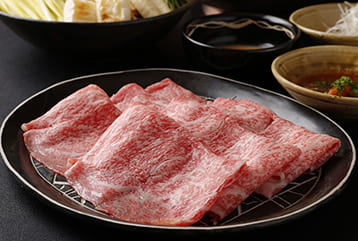
Directions: Two minutes from Roppongi Station
Hours: noon to 3 p.m., 5 to 11 p.m. (weekdays); noon to 10:30 p.m. (weekends and holidays)
Tel: 03-3402-1051
URL: https://gurunavi.com/en/g017400/rst/
For those looking to try famous Kobe beef integrated into popular Japanese cuisine, this restaurant in the Roppongi area offers the perfect chance. Serving customers since 1961, Seryna uses the finest ingredients, including premium beef.
Highly recommended is its popular Kobe beef shabu-shabu, available at ¥20,000. It features thinly sliced meat and comes with seasonal vegetables and udon (thick wheat noodles). Seryna also serves crab shabu-shabu, a fun chance for guests to cook the seafood themselves in piping hot water or broth before enjoying it in a separate sauce. This dish is available at ¥10,000.
Matsunami
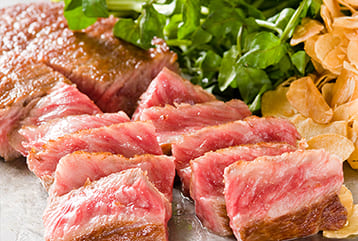
Directions: Six minutes from Asakusa Station (subway)
Hours: 11:30 a.m. to 2 p.m. (daily); 5 to 11 p.m. (Mon. to Fri.), 5 to 10 p.m. (weekends and holidays)
Tel: 03-3844-3737
URL: https://gurunavi.com/en/g390900/rst/
This steakhouse in the historical Asakusa area serves steak unparalleled in flavor thanks to its preference for specially selected kuroge wagyu. Each cut boasts a soft and succulent texture and steaks are prepared in front of customers on an impressively sized grill.
The Kobe beef course (¥22,000) is recommended and features a 200-gram sirloin steak accompanied by an amuse-bouche, seasonal soup, salad and a choice of garlic rice or toast, among other dishes.
Guests can also choose from a wide variety of menu options such as a 100-gram Kobe beef steak (¥12,000) and a la carte dishes, including seared beef sashimi (¥5,000).
Kurata
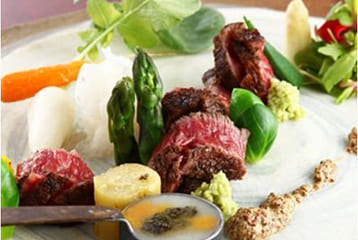
Directions: Two minutes from Musashi-Koyama Station
Hours: 11:30 a.m. to 2 p.m. (weekends and holidays); 5:30 to 11 p.m. (Tues. to Sun., a day before a holiday and holidays)
Tel: 03-5773-1268
URL: https://gurunavi.com/en/gdth000/rst/
Run by the youthful Masaki Kurata who doubles as owner and chef, this Japanese restaurant opened in January 2012. The exquisite eatery near Musashi-koyama Station on the Tokyu Meguro Line was awarded Bib Gourmand status in the 2015 Michelin Guide to Tokyo.
Kurata offers authentic Japanese courses, sushi and soba buckwheat noodles. Guests are sure to appreciate the tantalizing range of delectable dishes served with precise presentation. The exclusive broiled wagyu accompanied by various vegetables is particularly of note and available at ¥4,800. Those hoping to enjoy the dish while indulging in other flavors can try the Hasumibune course.
Toyo
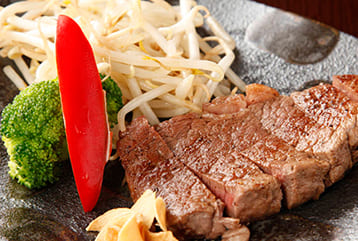
Directions: One minute from Mitsukoshimae Station
Hours: 11 a.m. to 3 p.m. (daily); 5 to 11 p.m. (Mon. to Fri.), 5 to 10 p.m. (weekends and holidays)
Tel: 03-3241-0005
URL: https://gurunavi.com/en/ga74100/rst/
Beloved by customers for the last 80 or so years, this teppanyaki restaurant in the historical Nihonbashi area is known for serving hand-selected beef from its contracted farms in Miyazaki and Tokushima prefectures.
Among the beef available at this upscale eatery, the legendary Ozaki beef from Miyazaki is a foodie’s dream. This wagyu is characterized by its surprisingly light and excellent flavor, and is famed for its rarity in the market; only 40 cows are shipped per month.
Thickly cut and grilled, its 100-gram sirloin steak is served at ¥5,000. Additionally, loin steak is available at ¥4,800 and tenderloin steak at ¥5,500 — also weighing 100 grams each.
Toritama
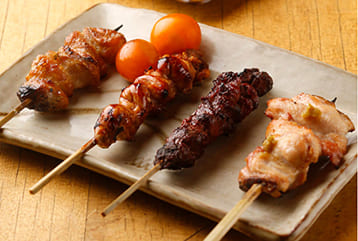
Directions: 10 minutes from Hiroo Station
Hours: 5:30 p.m. to 1 a.m. (Mon. to Sat.); closed Sun.
Tel: 03-5795-2950
URL: https://gurunavi.com/en/ge5s800/rst/
This eatery in the Shirokane district specializes in yakitori and is renowned for its regular clientele. Visiting is a must for those who want to explore the delightfully delicious world of Japanese skewered chicken.
Need help navigating the menu? Courses are recommended to fully experience what Toritama has to offer. The basic ¥1,980 tori course comprises seven kinds of yakitori (the selection rotates daily), the tama course (¥2,780) with 10 types and the Shirokane course (¥3,580) serves 12 varieties.
Individual skewers start at ¥250 and options include one of the restaurant’s recommendations — misaki (rooster’s tail).
Torishige
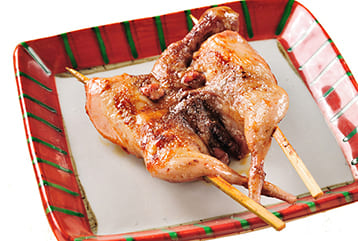
Directions: Three minutes from Ginza Station
Hours: 11:30 a.m. to 2 p.m. (Mon. to Fri.); 5 to 10 p.m. (Mon. to Sat.); closed Sun. and holidays
Tel: 03-3571-8372
URL: https://gurunavi.com/en/ge7y500/rst/
*Prices include tax.
Beginning in 1931 as a food stall in the Ginza district, the long-established Torishige is now frequented by customers of three generations.
A signature menu item of this yakitori restaurant is uzura-yaki (an entire grilled quail) priced at ¥2,800. Only a limited number are served each day so patrons hungry to try some should plan their visit with this in mind.
Another beloved menu item is skewered tsukune-yaki (¥390) that features a combination of minced chicken and aigamo (a cross between a wild and domestic duck).
Besides yakitori a la carte, various charcoal-grilled vegetables are also available.
Kudan
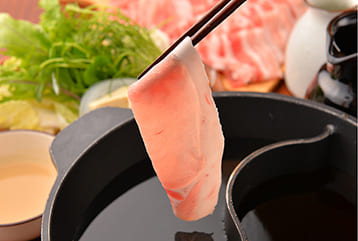
Directions: Two minutes from Ningyocho Station
Hours: noon to 2:30 p.m. (Wed. to Fri.); 5:30 to 11 p.m. (Tues. to Sat. and a day before a holiday), 5:30 to 10 p.m. (Sun. and holidays)
Tel: 03-6667-0097
URL: https://gurunavi.com/en/gdt1600/rst/
Those seeking to try affordable shabu-shabu in a casual setting should look no further than Kudan in the Nihonbashi Ningyocho district.
One highly recommended set (¥2,980) uses domestic marbled beef and comes with a side dish of the customer’s choosing. The main dish of shabu-shabu is accompanied by assorted vegetables, followed by udon or rice porridge.
Another ¥3,980 set features select kuroge wagyu beef, while other set meals incorporating pork are also popular.
All-you-can-eat and drink courses are also of note.
Tango
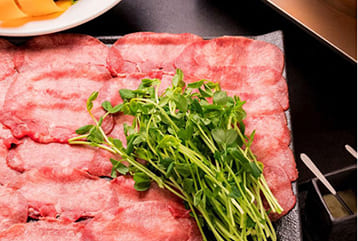
Directions: One minute from Akasaka Station
Hours: 11:30 a.m. to 2:30 p.m.; 5:30 to 11 p.m. (Mon. to Fri.), 5:30 to 11 p.m. (Sat.), 5 to 10 p.m. (Sun. and holidays)
Tel: 03-6441-3261
URL: https://gurunavi.com/en/gg2r400/rst/
*Prices include tax.
Specializing in gyūtan (beef tongue), this Akasaka restaurant strives to serve unique dishes exclusive to Tango that unlock the full potential of this particular cut of meat.
Grilling gyūtan is standard, but this chic restaurant offers it in the form of shabu-shabu.
Tango suggests diners partake in premium shabu-shabu served with five flavored salts, which comes with ramen (¥3,980 for two servings). Sweeping gyūtan through boiling water gives it a rare consistency that tastes divine.
Gyūtan-zushi may also intrigue guests; four pieces are available at ¥1,680.
Yasuda
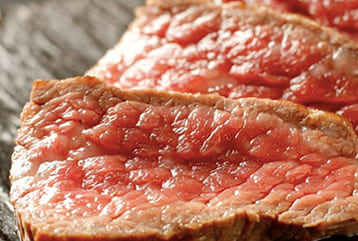
Directions: Directly connected to Ginza-Itchome Station
Hours: 11:30 a.m. to 2:30 p.m. (daily); 5:30 to 11 p.m. (Mon. to Fri.), 5:30 to 10 p.m. (weekends and holidays)
Tel: 03-6263-0270
URL: https://gurunavi.com/en/gdkx702/rst/
This high-end restaurant in the bustling Ginza district is known for its premium ingredients and creations from Niigata Prefecture, highly acclaimed Koshihikari brand rice and sake among them. Top-tier nodoguro (blackthroat seaperch) is among the seafood served at Yasuda and a selection of over 30 sake make for wonderful accompaniments to any meal.
However, a highlight that would render meat lovers remiss if skipped is the restaurant’s kuroge wagyu steak, specifically, Imari beef from Saga Prefecture in Kyushu. At ¥4,300, chefs forgo complexity for simply searing the meat, allowing its flavors to truly shine. This dish is also available at other Yasuda locations in Shimbashi and Ebisu.
Waran
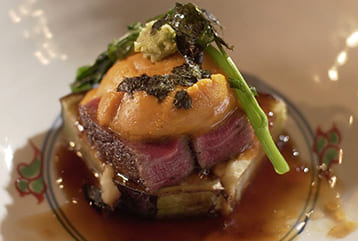
Directions: Three minutes from Ginza Station
Hours: 5 to 11:30 p.m. (Mon. to Fri.), 5:30 to 10 p.m. (Sat., limited to large reservations); closed Sun. and holidays
Tel: 03-5568-7450
URL: https://gurunavi.com/en/e639800/rst/
Despite its location in the commercial district of Ginza, this tranquil restaurant on the seventh floor of a centrally located building offers respite with an outdoor garden providing a beautiful contrast to its warm interior.
At Waran, guests can savor fresh seafood delivered from contracted ports across the country with a wide range of high-end sake selected by its okami (female manager) who is also a sake sommelier.
Among a variety of luxurious dishes, diners looking to treat themselves will not be disappointed by the Kanzaki chateaubriand steak from Iwate Prefecture topped with creamy sea urchin (¥8,800), a marriage between some of the best the land and sea has to offer.
Toriyoshi
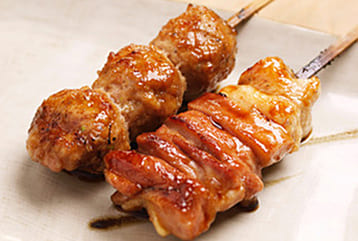
Directions: 10 minutes from Hiroo Station
Hours: 5 to 11 p.m. (daily)
Tel: 03-5464-0466
URL: https://gurunavi.com/en/g388701/rst/
*Prices include tax.
This yakitori restaurant in the Nishi-Azabu district is run by an owner determined to spread the legacy of Japanese chicken skewers throughout Paris.
Meanwhile, in Japan, ingredients selected by the owner’s discerning eye are sure to fully satisfy customers; the chicken used for Toriyoshi’s yakitori is Date-dori, a renowned brand from Fukushima Prefecture.
Twenty flavorful types of yakitori are available from ¥200 to ¥400, and tsukune (minced chicken skewers) priced at ¥300 are a must for every order.
Besides the main wraparound counter with 40 seats, groups of eight have the option of booking a private room with its own counter.
Kashiwa
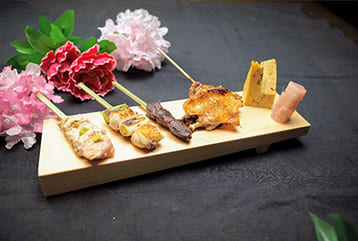
Directions: Two minutes from Higashi-Ginza Station
Hours: 11:30 a.m. to 2 p.m. (daily); 5 to 11:30 p.m. (Mon. to Fri.), 5 to 11 p.m. (weekends and holidays)
Tel: 03-6264-3288
URL: https://gurunavi.com/en/p711001/rst/
Overlooking a vista facing Tokyo Tower, this yakitori restaurant on the 11th floor of a building in the Ginza district uses Hinai-jidori chicken nurtured in Akita Prefecture, one of the country’s major varieties.
Diners can enjoy expertly charbroiled yakitori by veteran chefs at Kashiwa, which has a wide selection of white and red wines that match well with the skewers.
Visitors are encouraged to try a course that showcases the full breadth of flavors and dishes this restaurant houses. Among the meal options, the “Take” course is highly rated and consists of an impressive 18 dishes. The ¥7,000 course mostly consists of yakitori and other recipes using Hinai-jidori.
Man Sun
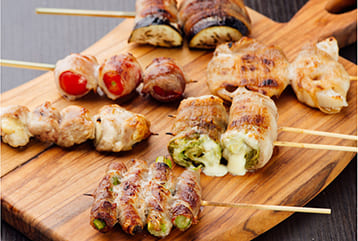
Directions: Three minutes from Ikebukuro Station
Hours: 5 to 11:30 p.m. (daily)
Tel: 03-5396-7414
URL: https://gurunavi.com/en/gf8a800/rst/
Travelers looking to indulge in the quintessential combination of beer and yakitori should mosey over to Man Sun that offers a substantial range of yakitori from ¥100. This bustling establishment near Ikebukuro Station also has a two-hour all-you-can-drink course that is available at ¥1,800 with more than 60 alcoholic and nonalcoholic options on the menu.
For those undecided on what to order, a set of five skewers (¥880) might be a wise choice to kick off the meal. Skewered vegetables wrapped in bacon such as cherry tomatoes or asparagus (both ¥250) are other popular items.
In terms of meat, Miō-dori chicken thigh skewers (¥100) are highly recommended.
Miyachiku
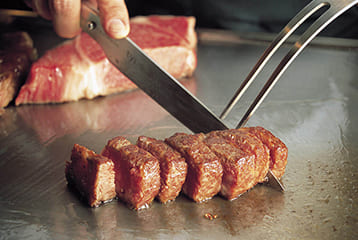
Directions: Three minutes from Shibuya Station
Hours: 11 a.m. to 3:30 p.m. (daily); 5 to 11 p.m. (daily)
Tel: 03-3477-2226
URL: https://gurunavi.com/en/a201401/rst/
Operated by a subsidiary of confectionery chain Fujiya Co., this sumptuous teppanyaki restaurant in the Udagawa-cho area offers premium Miyazaki beef served in various dishes.
Among the wide variety of menu items, Miyachiku’s teppanyaki lunch courses offer guests the opportunity to fully enjoy the beef at relatively reasonable prices.
One option is the Miyazaki beef steak lunch where customers can select a cut of beef to be grilled teppanyaki-style. Available from ¥3,200, this course is accompanied by six other dishes, including an appetizer, salad and grilled seasonal vegetables. The Miyachiku course (¥5,000) is an elevated version with eight dishes, including iron-grilled beef.
Kudaka
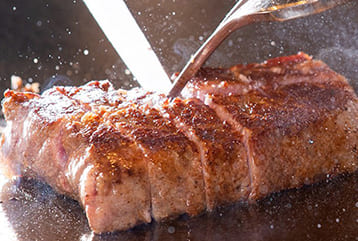
Directions: Three minutes from Asakusa Station
Hours: 11:30 a.m. to 2 p.m.; 5 to 10 p.m. (daily)
Tel: 03-6231-6744
URL: https://gurunavi.com/en/gg7e500/rst/
Located in the Asakusa area many flock to, Kudaka’s sizable and teppanyaki-centric menu options are sure to provide guests of different tastes with a satisfying experience.
Its signature menu item is a course (¥4,800) spotlighting A-5 ranked kuroge wagyu steak. Together with five other dishes, including an amuse-bouche, assorted appetizers and a vegetable dish, the course includes a total of 80 grams of lean wagyu. For an additional fee, guests can customize their meal with different cuts; the premium chateaubriand steak (¥2,500) is especially recommended.
Another course (¥5,800) has both foie gras and steak cooked teppanyaki style.
Asano
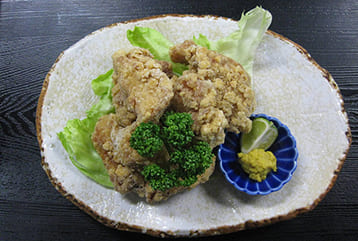
Directions: Two minutes from Kojimachi Station
Hours: 11:30 a.m. to 2 p.m. (Mon. to Sat.); 5 to 10:30 p.m. (Mon. to Fri.); closed Sun. and holidays
Tel: 03-3263-5161
URL: https://gurunavi.com/en/g841400/rst/
*Prices include tax.
Asano has served Japanese cuisine since its founding in 1908 in the Kojimachi area. Complete with private tatami rooms, traditional dining and architecture enthusiasts who visit this restaurant are sure to have a delightful experience.
An authentic Japanese course is available at ¥4,300 with seven items — sashimi, tempura and other elevated versions of staple dishes.
The menu also has an ample spread of individual dishes that range from seasonal seafood and simmered recipes to fried fare. Among them, the restaurant touts the fried chicken toriniku tatsutaage (¥590) as particularly tasty.
Tokitarazu
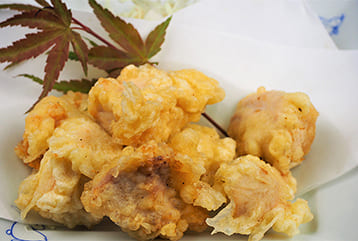
Directions: Five minutes from Hiroo Station
Hours: 11:30 a.m. to 3 p.m.; 6 p.m. to 12 a.m. (Mon. to Sat., holidays and a day before a holiday)
Tel: 03-6277-1577
URL: https://gurunavi.com/en/gfvd200/rst/
This restaurant in the Hiroo district serves authentic Japanese meals themed around traditional kaiseki multicourse cuisine.
At lunch time, various types of set meals (from ¥1,100) are popular, while full-fledged courses are available during dinner time. The grand course consisting of eight dishes (¥4,500) incorporates seasonal ingredients.
Moreover, visitors should be sure to try Hakata-fū tori chicken tempura (¥980) with citrus-flavored ponzu sauce or bamboo charcoal salt. Crispy tatsutaage chicken (¥700) is also served at lunch time.
For sports fans, on specific days the eatery plans to have its TV tuned to some of the live international rugby matches taking place.
Youzan
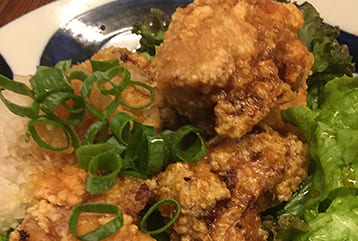
Directions: Five minutes from Roppongi Station
Hours: 11:30 a.m. to 1:30 p.m. (Mon. to Fri.); 6 to 11:30 p.m. (Mon. to Sat.); closed Sun. and holidays
Tel: 03-6447-1881
URL: https://gurunavi.com/en/gck3100/rst/
This inviting establishment near the bustling Roppongi center holds a wealth of fresh culinary offerings for those already familiar with staple Japanese dishes.
Youzan’s bounty of creative dishes fall under the categories of tofu, nagaimo yam, eggplant, fish and meat.
One unique option is the restaurant’s margherita pizza (¥780) with dough made partly from brown rice; another option is its seafood pizza at ¥980.
As for meat dishes, its juicy karaage (¥800) is sure to please; the chicken is soaked in salted rice malt before being fried and is served with a ponzu sauce mixed with grated daikon radish.
Hakatanagare
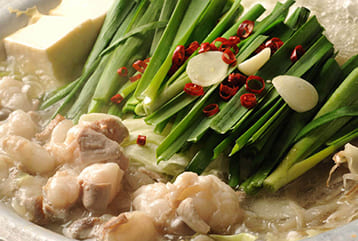
Directions: One minute from Seibu-Shinjuku Station
Hours: 3 p.m. to 12 a.m. (Mon. to Thu.), 3 p.m. to 4 a.m. (Fri. and a day before a holiday), noon to 4 a.m. (Sat.), noon to 12 a.m. (Sun. and holidays)
Tel: 03-3207-5653
URL: https://gurunavi.com/en/garc201/rst/
*Prices include tax.
Located in Shinjuku’s bustling Kabukicho entertainment district, this restaurant specializes in motsu nabe (offal hot pot) and shabu-shabu.
Motsu nabe’s initial claim to fame was as a local dish from the Hakata area of Fukuoka in the Kyushu region. Hakatanagare serves a variety of impressive dishes with ingredients from Kyushu, including tetsunabe gyōza dumplings (¥520) cooked in a shallow iron pan.
Travelers invested in experiencing the full spectrum of the country’s cuisine should be sure to order the Hakata tokusen (selected) motsu nabe (¥1,200); broth options for this Fukuokan delicacy include shoyu, salt or miso, among others.
Oonoya (Motoyoyogicho)
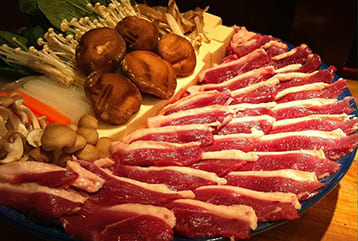
Directions: One minute from Yoyogi-Hachiman Station
Hours: 11:30 a.m. to 3 p.m. (Mon. to Sat.); 5:30 to 10:30 p.m. (Mon. to Fri.); closed Sun. and holidays
Tel: 03-3467-7513
URL: https://gurunavi.com/en/p437300/rst/
*Prices include tax.
This traditional soba restaurant with a 70-year history has long served customers divine Japanese cuisine in Shibuya’s Motoyoyogicho area.
Besides a host of soba dishes with assorted toppings, kamo nabe (duck hot pot) is one highly recommended indulgence customers should not miss. Available from October through May, the tokusei (special) kamo nabe course is offered from ¥3,800.
Made of aigamo duck from Miyagi Prefecture and a wealth of vegetables, the restaurant’s experienced chefs add a twist to this dish with in-house katsuo dashi (bonito stock).
